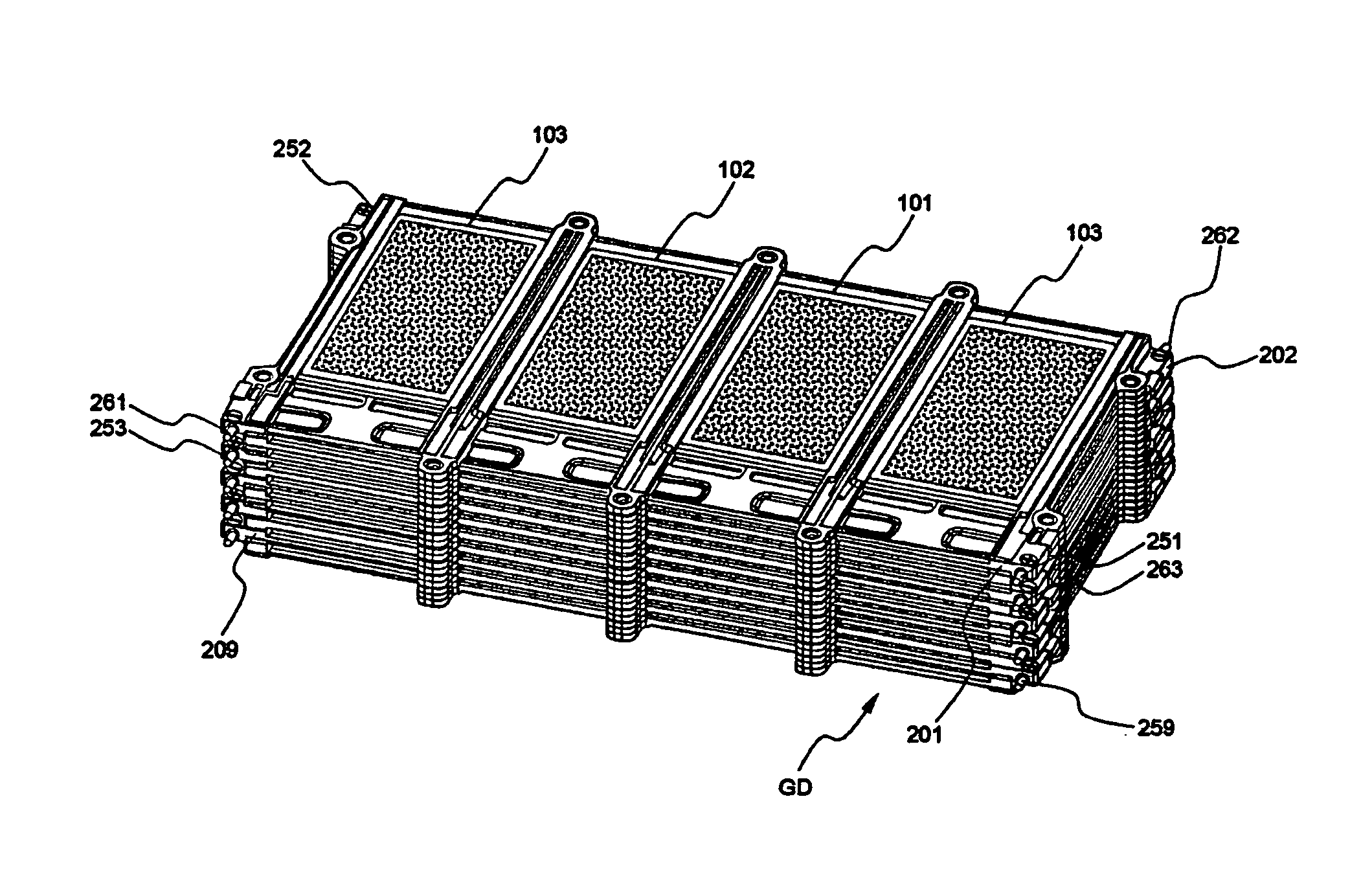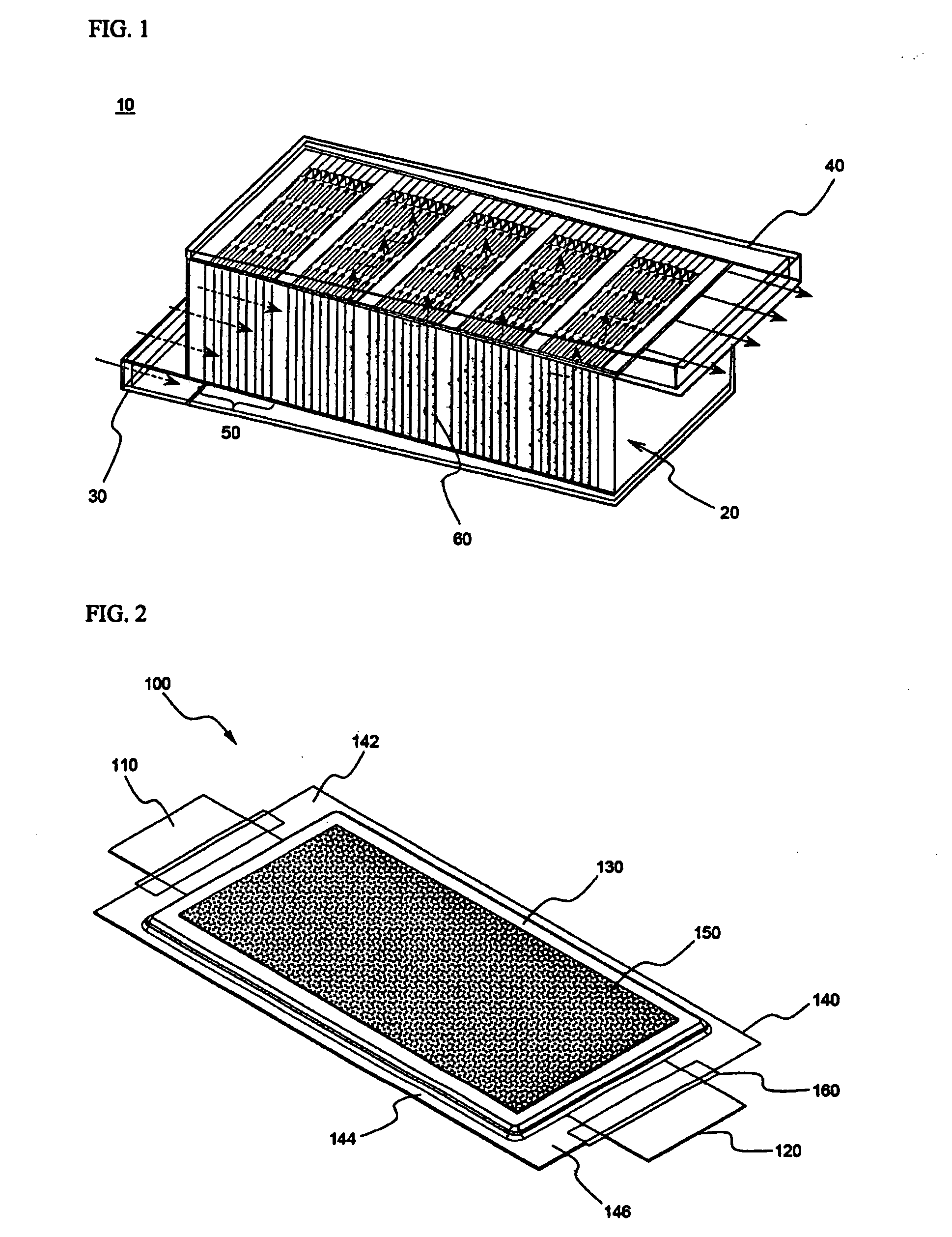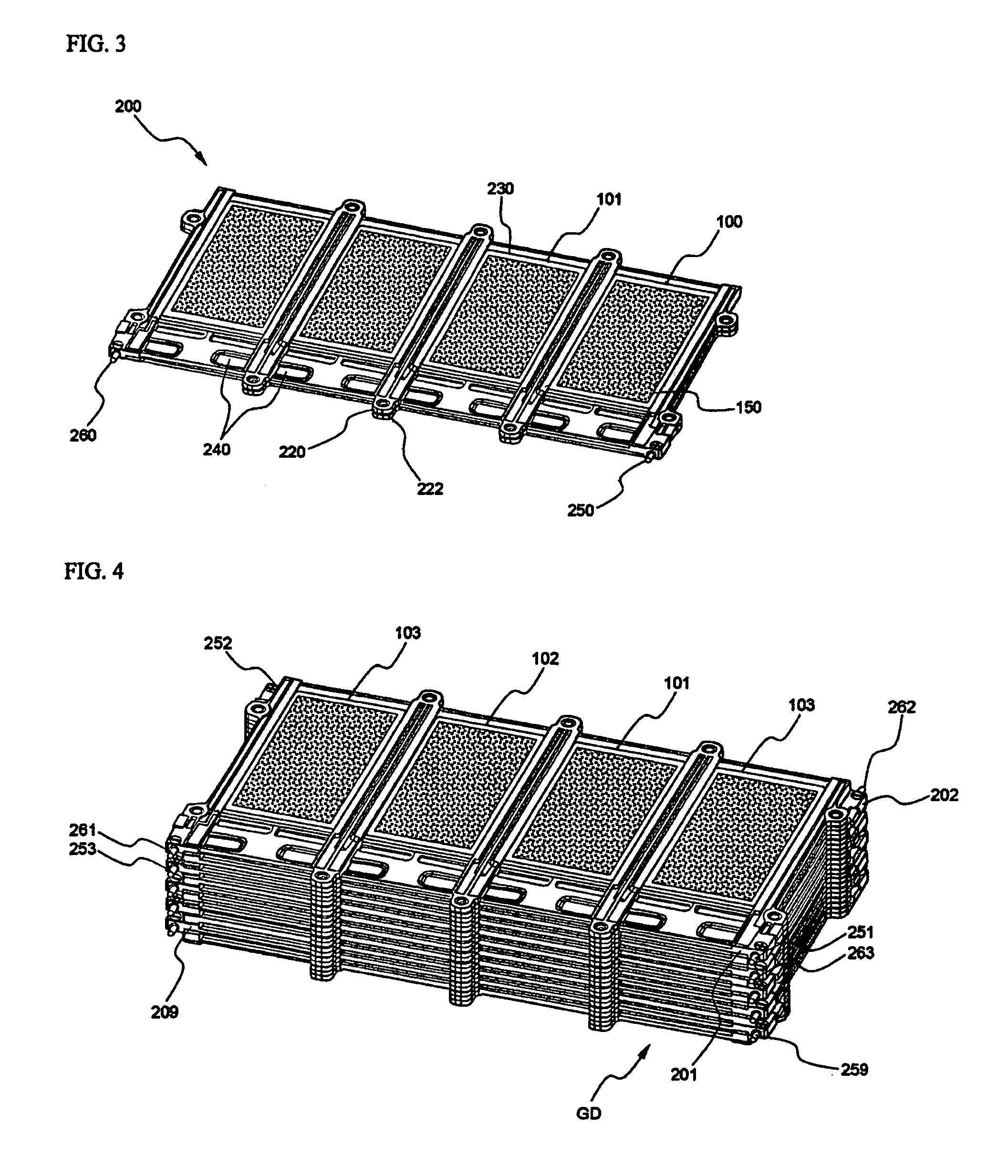Battery pack comprising combined temperature-controlling system
a battery pack and temperature control technology, applied in the direction of cell components, jackets/cases materials, flat cell grouping, etc., can solve the problems of large amount of heat generated by the unit cell, degraded unit cell, and air pollution
- Summary
- Abstract
- Description
- Claims
- Application Information
AI Technical Summary
Benefits of technology
Problems solved by technology
Method used
Image
Examples
Embodiment Construction
[0048]Now, preferred embodiments of the present invention will be described in detail with reference to the accompanying drawings. It should be noted, however, that the scope of the present invention is not limited by the illustrated embodiments.
[0049]FIG. 2 is a perspective view typically illustrating a pouch-shaped battery used as a unit cell according to a preferred embodiment of the present invention.
[0050]The pouch-shaped battery 100 is constructed in a structure in which two electrode taps 110 and 120 protrude from the upper end and the lower end of a battery body 130, respectively, while the electrode taps 110 and 120 are opposite to each other. According to circumstances, both the electrode taps 110 and 120 may protrude from the upper end of the battery body 130. A sheathing member 140, as a battery case, comprises upper and lower sheathing parts. That is, the sheathing member 140 is a two-unit member. While an electrode assembly (not shown) is received between the upper and...
PUM
| Property | Measurement | Unit |
|---|---|---|
| operating temperature | aaaaa | aaaaa |
| temperature | aaaaa | aaaaa |
| temperature | aaaaa | aaaaa |
Abstract
Description
Claims
Application Information
 Login to View More
Login to View More - R&D
- Intellectual Property
- Life Sciences
- Materials
- Tech Scout
- Unparalleled Data Quality
- Higher Quality Content
- 60% Fewer Hallucinations
Browse by: Latest US Patents, China's latest patents, Technical Efficacy Thesaurus, Application Domain, Technology Topic, Popular Technical Reports.
© 2025 PatSnap. All rights reserved.Legal|Privacy policy|Modern Slavery Act Transparency Statement|Sitemap|About US| Contact US: help@patsnap.com



